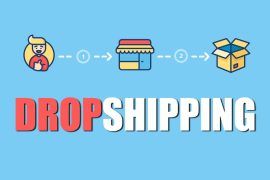Enterprise asset management software helps firms buy, manage, and analyze physical assets across a variety of industries. By tracking the lifecycle of all company-owned assets, a holistic approach helps optimize management techniques.
The term “enterprise asset management” refers to a collection of software, systems, and services that are used to manage and control operational assets and equipment. The goal is to improve asset quality and utilization throughout their lives, as well as increase productive uptime and lower operating costs.
Work management, asset maintenance, planning and scheduling, supply chain management, and environmental, health, and safety (EHS) efforts are all part of enterprise asset management.
The purpose of enterprise asset management software is to monitor and regulate asset performance, maintenance expenses, and utilization across the organization. Companies in asset-intensive industries, including manufacturing, construction, energy, and utilities, benefit the most from this software type.
Maintenance teams are the principal users of EAM software, which utilize it to discover problems and execute inspections or repairs. EAM is similar to devices in the computerized maintenance management systems (CMMS) category in terms of capability.
Table of Contents
The importance of Enterprise Asset Management Software for Businesses
Enterprise asset management is becoming an important technique to manage and enhance asset lifespan in the world of maintenance and operations, where budgets are always being reduced, and assets are deteriorating.
EAM enables you to track, manage, and optimize every asset in today’s facilities and communities, from boilers to HVAC to every other asset in today’s facilities and communities, all while staying within budget limits.
Enterprise asset management that is more strategic has been critical to many firms staying afloat in recent years and better allocating funds by projecting asset lifecycle demands with greater clarity.
How do we find Enterprise Asset Management Software important?

EAM is critical because it enables businesses to measure, assess, manage, and optimize asset quality and reliability.
Hundreds of thousands, if not millions, of assets, are held by organizations of various kinds. They have a lot of assets.
Railroads, pipelines, manufacturing equipment, transportation fleets, and windmills are examples of assets, as are nearly any piece of equipment required to maintain production, services, and operations.
Maintenance teams can use EAM best practices to acquire more control over complex settings to:
- Centralize asset data: As part of EAM, a CMMS informs maintenance managers where an asset is, what it requires, who should work on it, and when. It automates and makes accessible and auditable important asset management workflows.
- Prevent problems from arising: Asset management software helps preventive maintenance capabilities so that equipment can run reliably and continuously. It assists in ensuring warranty compliance and preventing production difficulties.
- Smarter asset monitoring: Remote asset monitoring enabled by AI provides actionable insight into the present and predicted asset statuses.
- It brings data from different departments and information silos together, resulting in fewer, more accurate warnings and better decision-making.
- Make the most of your assets: Data from IoT devices, as well as analytical and diagnostic tools, can assist increase the availability, dependability, and usable life of physical assets.
- Organize and maintain aging assets and infrastructure: To improve return on investment, more informed maintenance methods and risk management embedded in business processes are used to extend equipment life cycles.
- Elevate maintenance management: IoT, AI, and analytics help to improve equipment maintenance. Asset monitoring and traceability are becoming more important as environmental, health, and safety regulations become more stringent.
- Consolidate operational applications: EAM assists in the creation of a single technological system for the management of nearly all asset kinds. For a wide range of asset functions across an organization, processes are harmonized and standardized.
How does Enterprise Asset Management Software make it easy and convenient for you?
Facility and maintenance managers and directors can have a better hold on the full spectrum of their physical asset systems thanks to enterprise asset management’s advanced asset tracking and management.
This streamlines the process of making a budget, repair vs. replacements, capital planning, and other decisions.
EAM delivers the numbers needed to plan and stretch budget expenditures with more sustainable operational assets by providing data on asset lifecycle today, 5, 10, and 20 years in the future.
Enterprise software asset management streamlines the planning process and results in a portfolio that lasts longer.
Overall, EAM is beneficial because of reasons like understanding asset age, condition, and longevity can help you extend the asset lifecycle.
With data and analytics covering the entire asset lifespan, you can predict asset breakdowns and demands sooner.
To make it easier to foresee demands and manage resources, provide data for improved capital planning.
How is Enterprise Asset Management Software the future?
Because it provides a technique to truly manage assets based on the whole picture of their life and demands, EAM is the future of operations management.
Operators can make better, faster decisions that lead to increased asset performance when they have more data on their asset inventory, state, history, and projected failures.
What are some ways to be more strategic with asset management?
There are various ways to better manage assets strategically, and it all begins with utilizing the capabilities of an asset management system.
You can’t manage what you can’t measure, after all. You can witness the entire asset lifetime come to life with strategic asset management software.
You can answer any query you and your management have with the data of a strategic asset management system, whether you’re wondering if that asset will last for another ten years or how much money you should put into that other asset.
After you’ve decided on the best course of action, you may use data, charts, and graphs from your software system to explain why you made that choice and even justify the need for more resources.
Strategic asset management may help you get from being concerned about your assets today to being confident in their performance and planning for years to come.
The difference between EAM and CMMS
Although EAM is frequently confused with a computerized maintenance management system (CMMS), a closer examination indicates that the two are not interchangeable. A CMMS is one component of EAM.
It focuses on centralizing data to make maintenance management operations easier and more automated. EAM is a method of asset lifecycle management that helps assets function well from acquisition until disposal.
Some of the best Enterprise Asset Management Software
IBM Maximo
The IBM Maximo Application Suite provides critical intelligence for asset management, maintenance, and operations in a new era.
IBM Maximo extends its market-leading CMMS/EAM platform by integrating Asset Performance Management (APM) solutions into an open, hybrid-cloud-based integrated suite that combines monitoring, maintenance, and reliability data into a single platform.
Maximo changes the way businesses manage their assets. Maximo provides operations and reliability professionals with improved insights into the drivers of success and risks within their organization, thanks to powerful analytics, AI, and industry-specific apps.
UpKeep
Upkeep is an Asset Operations Management system that enables maintenance, reliability, and operations teams to effectively manage the day-to-day maintenance lifecycle, maximize asset utilization, and receive real-time insight into performance data.
Maintenance teams, which are designed for a distributed workforce, employ inventory, work orders, and budgets in one location to get more done while providing technicians with convenient and fast self-help where they work.
Asset performance management is used by reliability teams to ensure the long-term efficiency of their assets over their lifetime.
Conclusion
To cut a long story short, we can very well understand that an EAM system provides a plethora of benefits to a company, particularly those that deploy a large number of assets.
Furthermore, EAM software can also help businesses get organized like never before. In terms of business optimization, EAM has shown to be quite successful and is expected to grow even more in strength in the future.
Every company aspires to be the best in its field. This goal is largely met through enterprise asset management. It has the inherent potential to develop the business and successfully manage assets.
Learn more about management software by clicking on this blog by Saasworthy.






